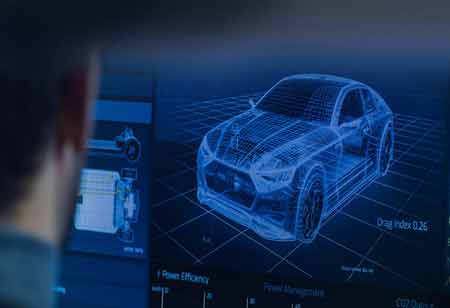Thank you for Subscribing to Auto Business Outlook Weekly Brief
How Does 3D Printing Help Automotive Manufacturing?
With its many advantages in prototype, part manufacture, and customization, 3D printing is essential to the automotive industry.

By
Auto Business Outlook | Friday, December 20, 2024
Stay ahead of the industry with exclusive feature stories on the top companies, expert insights and the latest news delivered straight to your inbox. Subscribe today.

With its many advantages in prototype, part manufacture, and customization, 3D printing is essential to the automotive industry. As developments continue, the use of 3D printing in the automotive industry is expected to increase, spurring innovation and boosting competitiveness.
Fremont, CA: Additive manufacturing, commonly called 3D printing technology, has transformed numerous sectors by creating intricate structures with previously unheard-of efficiency and precision. With this technology, items are constructed layer by layer from a digital file, enabling complex designs that are not possible with conventional manufacturing techniques.
Because 3D printing may cut costs and lead times, the car industry has increasingly used this technology in recent years for prototypes, part manufacture, and customization.
Prototyping
Prototyping is one of 3D printing's main uses in the automotive industry. Engineers can test and improve components more effectively when prototypes can be produced quickly, which speeds up the design and development process. To cut down on development time, Ford, for instance, employs 3D printing to produce prototype parts for new car models.
By using 3D printing, automakers can swiftly evaluate design concepts and create concept automobiles, guaranteeing that any changes can be made without significant delays. This iterative method boosts creativity and raises the final product's overall caliber.
Parts Manufacturing
3D printing is increasingly being utilized to produce car parts and prototypes. This technology makes producing intricate and lightweight components possible to enhance vehicle performance and fuel efficiency. In addition, 3D printing works well for low-volume production runs and custom items since it offers flexibility and cost advantages over conventional manufacturing methods. The efficiency of the supply chain is improved, and inventory expenses are decreased by producing parts as needed.
Customization
The ability to customize 3D printing is revolutionizing the automotive sector by making it possible to produce components specifically suited to each individual consumer's tastes. Thanks to this technology, unique parts that address particular requirements, like ergonomic improvements, custom interior trimmings, and limited-edition performance parts, can be made.
This degree of personalization increases customer happiness by providing solutions that are suited to their preferences. By offering a more individualized client experience, automakers can differentiate themselves in a crowded market.
Cost and Lead Time Reduction
One of 3D printing's most significant benefits in the automotive industry is its ability to cut costs and lead times. By using only the required material, 3D printing minimizes waste and lowers costs compared to traditional production procedures, which can include significant material waste. This primarily benefits small-batch production when conventional techniques might not be financially possible.
3D printing also makes faster turnaround times from concept to production possible. Designs may be completed and put into production far more quickly when prototypes can be made and tested quickly. Because of this manufacturing process agility, automakers are better able to adapt to changes and market demands.






